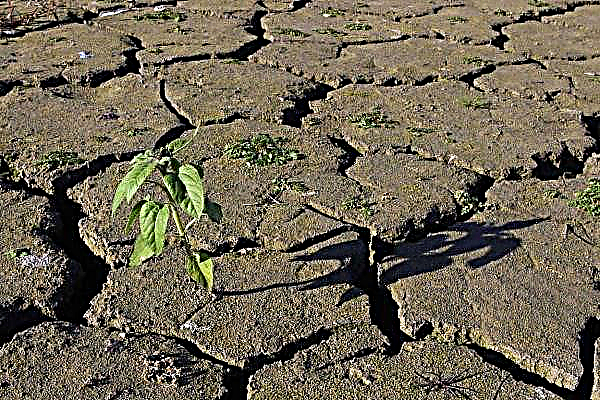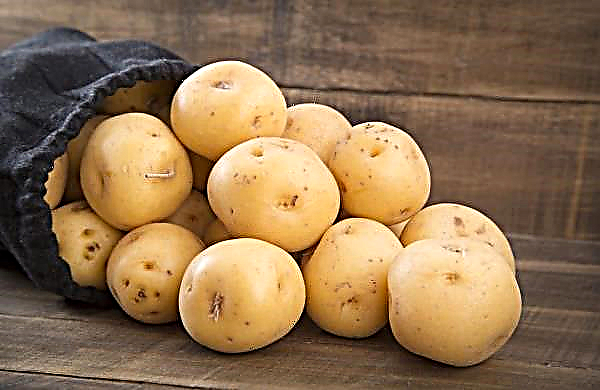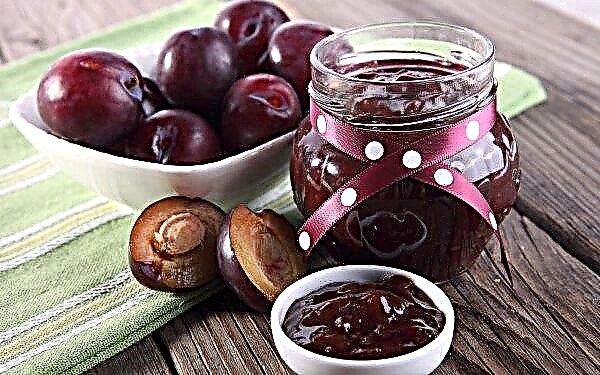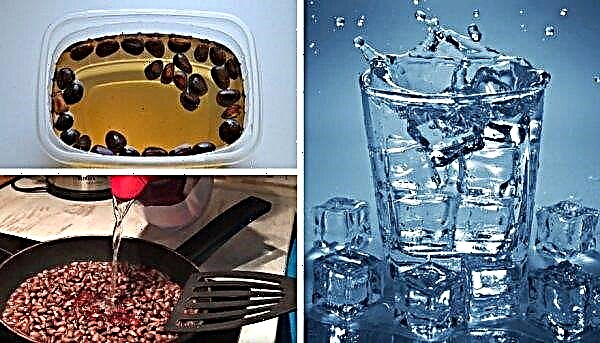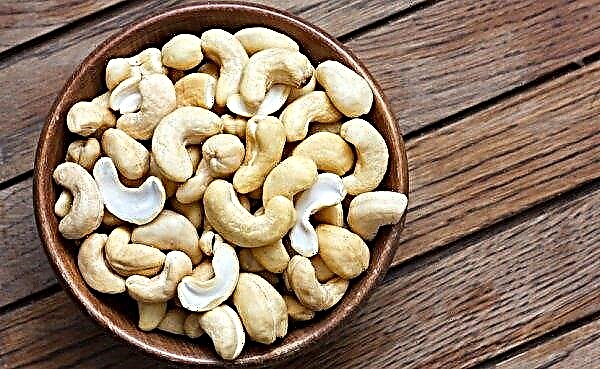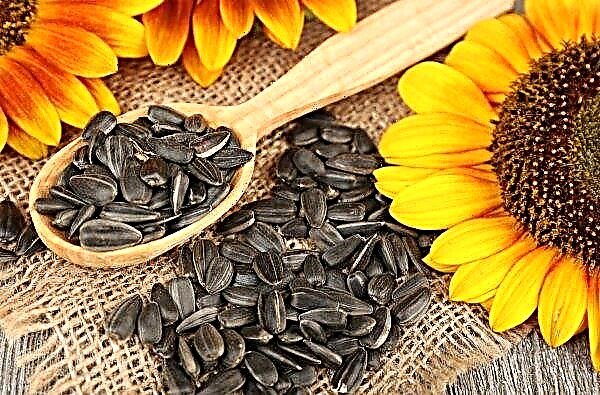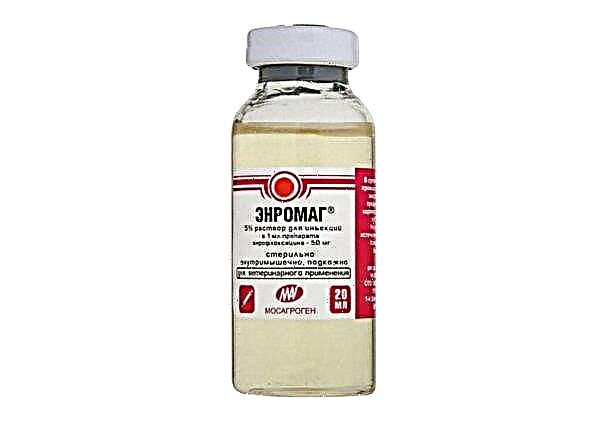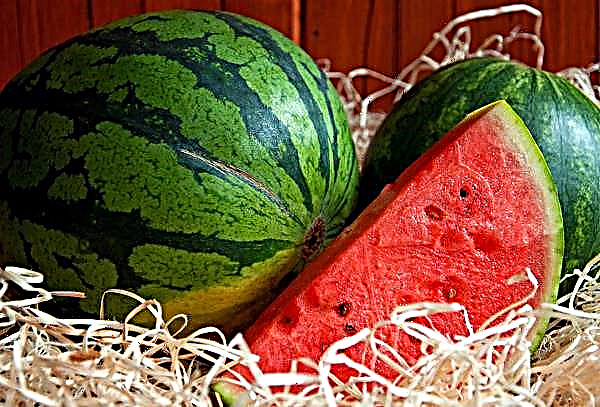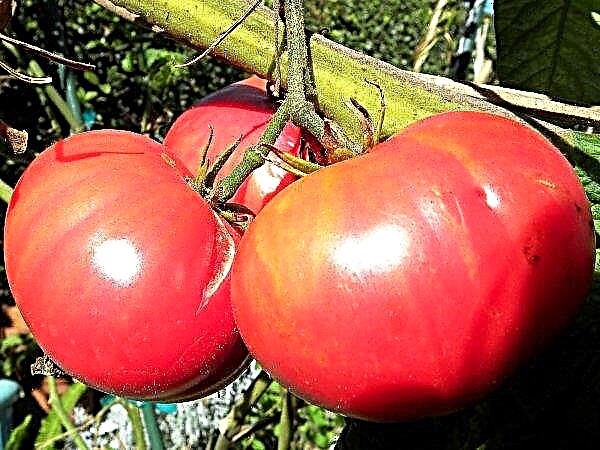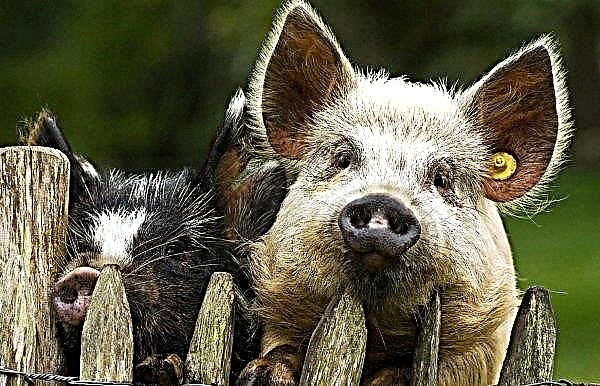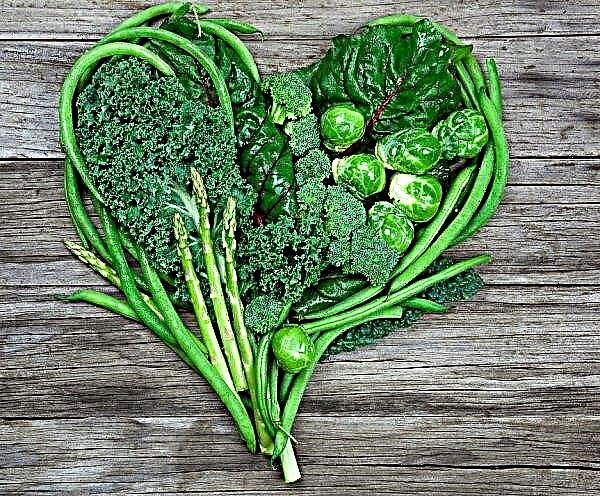Winter wheat differs from spring wheat in that it can be grown in regions with different climatic conditions, while giving a higher grain yield. One of the newest varieties of this culture is the Yuka variety. He received many positive reviews from farmers, and also serves as an excellent raw material for the production of high-quality flour. Description and characteristics of the Yuka variety, especially its sowing and crop care, as well as harvesting rules and recommendations for combating diseases and pests of winter wheat - further in the article.
History of creation
The Yuka variety was added to the State Register of the Russian Federation in 2012. This plant is the result of the work of Russian breeders of the Krasnodar Agrarian Station NIIISH and is obtained from a hybrid species that includes wheat grains Polovchanka and Rufus. The breeding of a new variety was carried out according to the technology of four-time individual selection, for which a patent was filed.

Grade description
Yuka winter wheat belongs to the variety lutescens (lutescens), i.e. contains soft-type grains. The plant has some characteristic features, due to which it differs from other varieties.
Did you know? Wheat was cultivated in ancient Egypt, more than 6000 years ago. Today, this plant provides food for about ⅔ of the world's population.
Description of wheat and its testing properties:
- The height of the cereal plant is up to 1 m, and its shape is upright or semi-upright.
- The root system is superficial. On it there are stem nodes, from which new shoots can appear.
- The stem is a hollow straw with a thickening in the middle.
- The leaves are elongated, lanceolate. The anthocyanin color of the first true leaf after cotyledon is practically absent.
- In the presence of the sun, flowering is open, and in cloudy weather it is closed. The culture is self-pollinated.
- The tubular ears are sparse sputtering and oblong. At first they are white, and as they mature, they turn yellow.
- Ears of medium density. Their tops are slightly pubescent or bare.
- The tooth is short, slightly curved. The lower spikelet scales on the inner side have a slight pubescence.
- Grains of medium size, elongated. Their surface is red.
- The weight of 1000 grains is 36–47 g. Grain nature is 810–825 g / l.

Wheat characteristics
Yuka wheat compares favorably with other varieties with numerous positive characteristics and high productivity. Many farmers have already verified the declared indicators of this crop in practice, as a result of which the variety received positive reviews.
Did you know? Compared to other crops, wheat ranks first in the world in terms of crop area. The leaders in its cultivation are China, India and the United States.
The main characteristics of the plant:
- the duration of the growing season - from 227 to 286 days;
- the ripening period is medium-late;
- the culture is resistant to bending stems;
- grains do not crumble;
- resistance to fungal diseases;
- tolerates heat and drought;
- winter hardiness is above average;
- productivity is 55–90 kg / ha.

Grain quality
Wheat grains are used to produce flour, therefore, they are characterized by milling and baking qualities. These parameters are important technological indicators. Yuku is easy to process into flour, which has high characteristics. Therefore, it is widely used for the manufacture of bakery products. In addition, the processing industry receives starch, alcohol and dextrin from wheat.
Flour indicators
The quality of the finished flour directly depends on the characteristics of the grain. Premium product can only be obtained from aligned grains of medium and large size. Yuka wheat has high milling characteristics. It contains about 28% crude gluten and 13.8% protein.
Baking properties
Flour obtained from Yuk wheat is widely used in the food industry for bread and baking. The product obtained by grinding grain has a light color, therefore, is an integral ingredient in many confectionery products. Baking from such flour has an excellent taste and is characterized by a nutritious composition.
Important! Yuka wheat is not used for the production of pasta. It belongs to the soft varieties, and high-quality vermicelli can be obtained only from the hard varieties of this culture.
Growing Features
In Russia, Yuka wheat is recommended to be grown in the North Caucasus region. The variety is suitable for cultivation in hot climates. The crop yield directly depends on how correctly planted. At the same time, it is necessary to observe the timing and norms of sowing, and after emergence, to ensure proper care for wheat.
Predecessors
The culture is capable of producing a high yield after almost any predecessors, combining well with high and low agricultural background. The variety can even be sown on a site that had previously been planted with corn.
The best predecessors for Yuki are such cultures:
- clover;
- legumes;
- potatoes.

Seeding rates
To collect a full-fledged crop from the field, it is necessary not only to properly plant, but also to comply with the norms of consumption of planting material per unit area. This indicator is called the seeding rate. It depends on the density and degree of fertility of the soil, because it is these criteria that affect the germination of seeds.
The sowing rate for Yuk wheat is 160–250 kg / ha. In loose soil, which contains a sufficient amount of nutrients, most of the seeds sprout, so the seeding rate for such soil decreases. And in areas with dense soil per unit area, a larger number of grains are sown, i.e. their germination in such a substrate is reduced.
Did you know? Wheat is grown mainly for the production of flour for baking bread. Hard cultivars that can be used to make pasta occupy only 10% of the total sown area.
Sowing dates
Yuka wheat belongs to winter crops, so its sowing is carried out in the fall. It is better to carry out this procedure in late September or in the first half of October. To ensure a friendly emergence of seedlings, the soil in the selected area should be dug up to a depth of 15–20 cm.
During this procedure, the following substances are applied to the soil:
- nitrogen - 40 kg / ha;
- phosphorus - 50 kg / ha;
- potassium - 100 kg / ha.
 Before planting seeds, the soil surface is loosened, eliminating large earthen clods.
Before planting seeds, the soil surface is loosened, eliminating large earthen clods.Sowing process
The procedure for planting Yuk wheat is not particularly difficult, but the seed must be embedded in the soil at a certain depth. If the seed is deepened too deep into the soil, it will not be able to germinate, and when planting to a shallow depth, mass lodging of the stems will be observed during the growth of the crop.
Important! The optimal depth of planting material is 2–3 cm when sowing in heavy soil and 3-5 cm when planting a crop in loose, light soil. The procedure is carried out using seeders, which make it possible to set the seed consumption rate per unit area.
There are such methods of sowing:
- narrow row - the seeds are embedded in the soil in rows, and between them leave a distance of about 8 cm;
- continuous private - landing rows is carried out with an interval of 15 cm;
- cross - when using it, one half of the sowing rate of grains is sown along the plot along, and the second half across.
 a- ordinary; b-band; in-scatter; g - narrow row; d - cross; e - wide-row and dotted; yellow tape; h - nesting; and - square-nested; to - combined; l - sowing in the comb; m - sowing in the garden; n- sowing in furrows; o- sowing in stubble
a- ordinary; b-band; in-scatter; g - narrow row; d - cross; e - wide-row and dotted; yellow tape; h - nesting; and - square-nested; to - combined; l - sowing in the comb; m - sowing in the garden; n- sowing in furrows; o- sowing in stubbleWinter wheat is usually sown in a narrow-row or continuous row method. After embedding planting material in loose soil, it is necessary to carry out rolling of the soil surface. This procedure helps to preserve moisture in the ground, and also increases the area of contact between seeds and soil particles, providing them with better germination.
Care
In order to achieve a high crop yield, it is necessary to ensure the emergence of the correct seedlings. Yuka wheat needs a large amount of nutrients, so in the process of growing it is necessary to regularly fertilize. Another important component of crop care is the fight against possible diseases and pests.
If on a site with wheat the depth of groundwater exceeds 3 m, then in the absence of rain during the flowering period, it is recommended to additionally water the crop. This will ensure the laying of more grains in the ears of the plant.
Fertilizers
To obtain a high grain yield, it is necessary to provide wheat with a sufficient amount of nutrients. Most of them are added to the soil at the stage of sowing seeds, but after emergence, the plants also need to be fed with compounds containing nitrogen.

As fertilizer for Yuka variety, you can use:
- ammonium nitrate;
- lime-ammonium nitrate;
- nitrogen sulfate (ammonium sulfate nitrate);
- complex mineral fertilizers.
Did you know? In 1904, wheat grains were found near Ashgabat (Turkmenistan), whose age was about 5000 years.
Nitrogen feeding system:
- in spring, at the stage of active seedling growth, add ammonium nitrate or nitrogen sulfate in an amount of 120 kg / ha;
- during bumping phases plants are fed with store-bought mineral fertilizers containing nitrogen, consuming about 120 kg of substance per 1 hectare.
Pest and Disease Control
Yuka winter wheat shows a strong immunity to diseases and pests. But in violation of agricultural farming techniques, crops can suffer from fungal infections and harmful insects, so it is important to be able to recognize signs of infection, as well as take corrective measures to correct the problem.
Important! The last time to process winter wheat with chemicals is possible no later than 20 days before harvesting.
The main diseases and pests of culture:
- Brown rust. Small orange spots appear on the leaves, which may have a dark border. As a result of this, the number of grains in the ear decreases and their quality deteriorates.

- Powdery Mildew A white coating is formed on the entire surface of the plant, resembling small pieces of cotton wool. In the process of the development of the disease, the white layer becomes more dense and entails the death of the ground part of wheat.

- Root rot. It affects the underground part of the plant. A black coating appears at the base of the stem, the roots become brittle, and the leaves and ears become light in color. Grains do not form, so the yield is reduced.

- Black bacteriosis. The infection is bacterial in nature, and its sign is watery spots on the leaves, stem and scales of the ear. At first they are painted in a dark green color, but then they turn black, causing the death of the plant.

- Cereal fly. The source of damage is small insect larvae that appear from eggs laid on leaves. They penetrate the flesh of the stem, making through it through passages. Wheat turns yellow and dries.
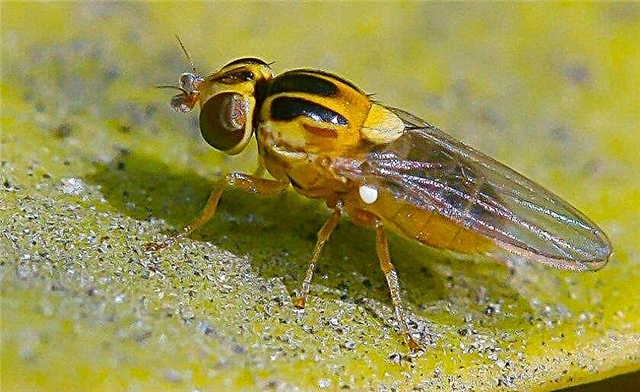
- Bread beetle. The pest lives in the upper layers of the soil and attacks the wheat during the ripening phase of the crop, damaging the ears. As a result, the grain spills onto the ground.
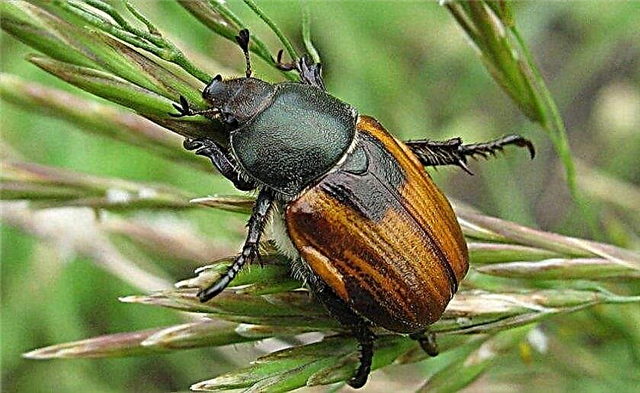
- Bread ground beetle. The insect can appear on crops during filling and ripening of ears. The top of the plants becomes sluggish and dry. Over time, it cracks, causing the grains to fall to the ground. Ground beetle lays eggs in the ground, and the larvae that emerged from them in the spring feed on young seedlings of the planted culture.

To combat these problems using such drugs:
- Altex, Bazudin, Dimetrin are effective against pests;
- To reduce the number of weeds, the herbicides "Dyalen" and "Bazagran" are used;
- against fungal infections use drugs "Bonlat", "Bayleton".
For the prevention of these diseases, it is necessary to comply with the grain sowing rate, as well as to timely destroy weeds, providing the plants with sufficient nutrients.
Harvest
Yuka wheat is harvested at the stage of wax ripeness of grain. This procedure is recommended to be carried out until the stem is completely dry, so that the grain does not begin to spill out onto the ground from a cracked spike. Wheat is harvested using a combine harvester - this method is the fastest and helps to avoid crop losses.
The collected grain is peeled and dried on an elevator using special cleaning and drying units. Store the crop in a dry room at an air temperature of + 5 ... + 8 ° C and a humidity of 65–70%, stirring it periodically to avoid rotting.Important! The optimal time for collecting Yuka varieties is the second half of July. The duration of harvesting the crop should be no more than 10 days, that is, after this time, the grain may begin to crumble.

Pros and cons of the variety
Despite the fact that Yuka wheat was bred relatively recently, it has already gained fame among farmers.
- They gave the culture many positive reviews, highlighting the following advantages of the variety:
- high productivity;
- excellent grain characteristics;
- unpretentiousness to climate conditions;
- high drought resistance and winter hardiness;
- good immunity to diseases and pests;
- resistance to shedding;
- lack of bending of stems;
- excellent milling and baking properties.
The only drawback of the plant is a poorly developed root system, located close to the soil surface. It makes the stalk of culture weak and weak, as a result of which it is easily pulled out of the ground.

Yuka winter wheat is an excellent raw material for the production of high-quality flour, suitable for the manufacture of delicious bakery products. The variety is notable for its easy cultivation and unpretentiousness to environmental conditions, as well as high productivity. Using the information presented above, you can independently cultivate Yuk wheat, getting a generous crop of high-quality grain.









